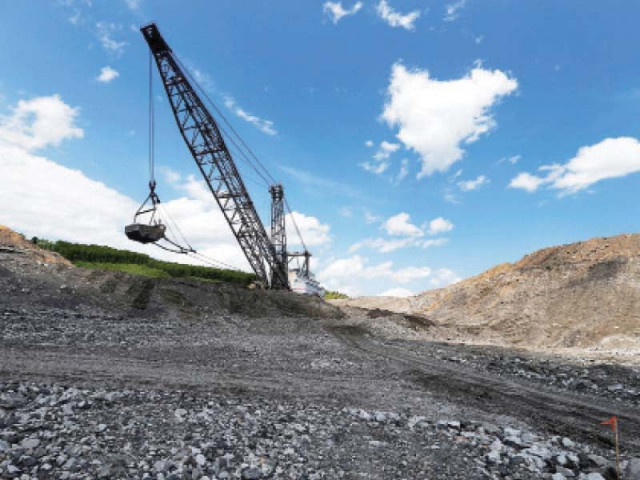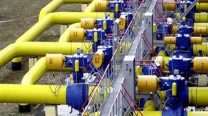Making good use of Thar coal
Billions of dollars can be saved if power plants shift from imported to local coal

International fuel prices have gone up several times, be it coal or LNG or even petrol and diesel. Imported coal prices have increased three times – from $80 per ton to $240 per ton or even more. We have three coal power plants which run on imported coal – Sahiwal, Hub and Port Qasim – having 1,320MW capacity each with combined coal import bill of more than $3 billion. If we convert these to Thar coal, we can save several billion dollars in cost and foreign exchange.
If the high imported coal prices continue as these are, it will not be possible to run these power plants for long. It is strange as to how it has been possible to continue to run these power plants up to now. Their production has been going down. Thar coal variable/ fuel cost is only Rs3.9 per kWh while imported coal power plants (Sahiwal and China Power Hub) are costing around Rs30 per kWh. Add Rs10 per kWh as fixed cost, you can imagine, where does it take us to – Rs40 per kWh? Although in Pakistan Thar coal price is $50-60 per ton at this stage (twice the typical price of $25-30) due to low utilisation, we will not touch the controversy at this time.
Despite all the pricing and costing issues, the imported fuel cost is more than seven times higher than the Thar coal fuel cost per kWh. In normal circumstances and prices, Thar coal-based electricity and imported coal-based electricity cost the same, which probably led the decision-makers to go for three imported coal power plants. There are two impacts; one of fuel cost and the other of foreign exchange. We are suffering from the highest current account deficit, leading to abnormal currency depreciation and causing destabilisation of the economy. Everyone in the country asks why we can’t use Thar coal. Easier said than done but it can be done.
There are three issues with Thar coal. Thar coal is technically called lignite and its energy content (calorific value – CV) is half that of imported (sub-bituminous) coal. Second, its water content is almost 40-50%, while one requires almost dry coal to be burnt in power plants. Third, its sulphur content is higher than imported coals. The issue is how to convert the imported coal power plants to Thar lignite. How to deal with lignite moisture, low CV and high sulphur? It was easier to design the power plants on Thar coal in the first place instead of converting the plants, which have been designed on a different type of coal.
There are a number of proposals. One, start with a 10-20% mix of Thar coal and imported coal, which may not require a lot of changes. This may be achieved in less than six months, although there would be logistics issues. Two, the other possibility is almost total conversion from imported coal to Thar coal, which may require significant technical changes, costing time and money. Classically, CFB boilers have been used in case of Thar lignite (as Engro Thar has installed). In case of normal sub-bituminous (imported) coal, coal is pulverised to a talcum powder like state and the coal powder is fired from sideways.
Such boilers are called pulverised coal-PC boilers. In them, coal burns like oil stream. It does not require pre-drying as the type of coal used in it is dry. All the three imported coal power plants are based on PC boilers. Lately, there have been technological developments, which let the lignite coal pulverised and dried in one package. If sub-bituminous coal is to be substituted by lignite coal, adjustments are required in coal handling, storage and pulverisation. Pre-drying can be done through solar energy as Thar is full of sunshine.
It can be dried both at the mine and power plant site. Additionally, exhaust steam is used in a reverse cycle and used for extra drying. This has been done in Germany earlier. Reportedly, Lucky Power is using almost the same approach in burning imported lignite and plans to use the local lignite eventually. A natural question arises why not convert Lucky first, which we will deal with later. There are logistics issues. The standard transport means for coal is railways. Unfortunately, there is no rail link connecting the Thar coal site to the railways network. A rail link project has been prepared, which could not be implemented due to a variety of financial reasons. But even if it is approved, it may take two to three years for construction.
However, truck transport is available. It may not have been attractive due to the smaller difference between the local and imported coal cost. It is certainly feasible now. There is great demand for cheap Thar coal by industries, especially cement, ceramics, glass and steel. Reportedly, some Thar coal is being sold to third parties belonging to industries, although in a legal vacuum. Engro-Thar and Sino-SSRL both are under cost-plus whose fixed cost is paid for and absorbed in electricity tariff. Mine owners have to be paid variable cost and an incentive. Thus, a third-party sales pricing formula should have been developed by now; better now than never.
Also, Thar coal is to be converted in a ready energy product by drying and grinding and possibly briquetting, if we want to promote industry-wide usage and save foreign exchange in other sectors as well. Technical changes of the power plant has many risks; 1. There may be loss in efficiency and increase in costs – both variable and capex; 2. There may be mistakes and accidents, especially with Thar coal as it is akin to spontaneous combustion; 3. Shutdown of power plant would certainly be required, which would be a loss of revenue for the operator/ owner companies. All of these costs money, which is not provided in the agreement and have to be absorbed by the government of Pakistan. These plants consume 5 million tons of coal each per year.
If Thar coal substitution saves $175 per ton, the annual cost saving per plant would be $875 million. If one assumes the project’s additional capex for conversion to the tune of $250 million, the payback period would be 3.42 months. Total saving for the three imported coal power plants would be $2,625 million per year. There would be equivalent savings of the same amount of foreign exchange also.
These savings can also absorb the funding requirement of railways’ track with a capex of $200 million. There is unutilised mine capacity, for which capacity cost is being paid that would be extra savings. It appears that the financial issues are tougher than the technical ones. The name of the game is timing. At least, 10-20% substitution may be done without losing much time, while planning and implementation of full conversion is initiated.
THE WRITER IS FORMER MEMBER ENERGY OF THE PLANNING COMMISSION AND AUTHOR OF SEVERAL BOOKS ON THE ENERGY SECTOR


















COMMENTS
Comments are moderated and generally will be posted if they are on-topic and not abusive.
For more information, please see our Comments FAQ